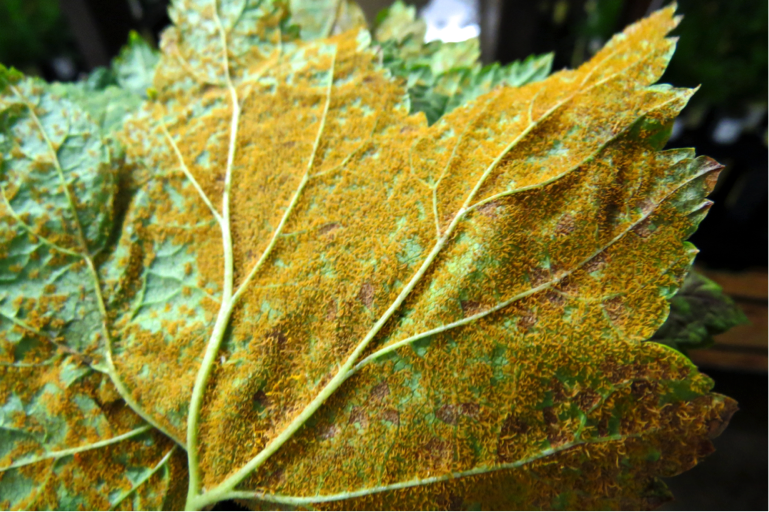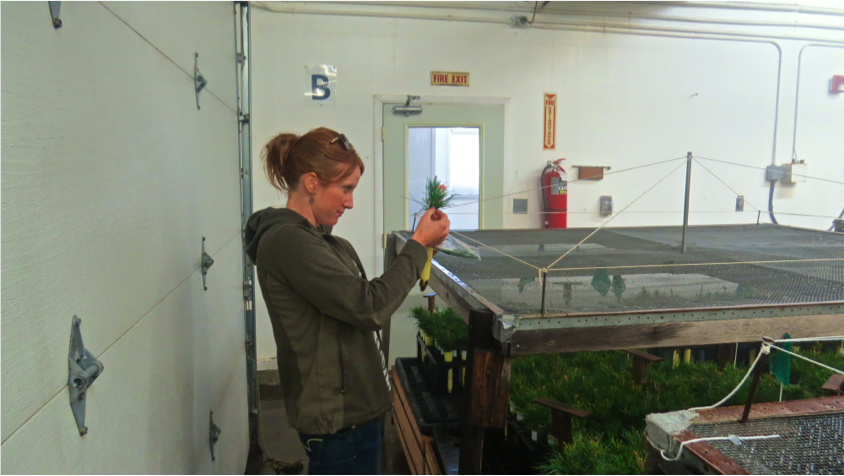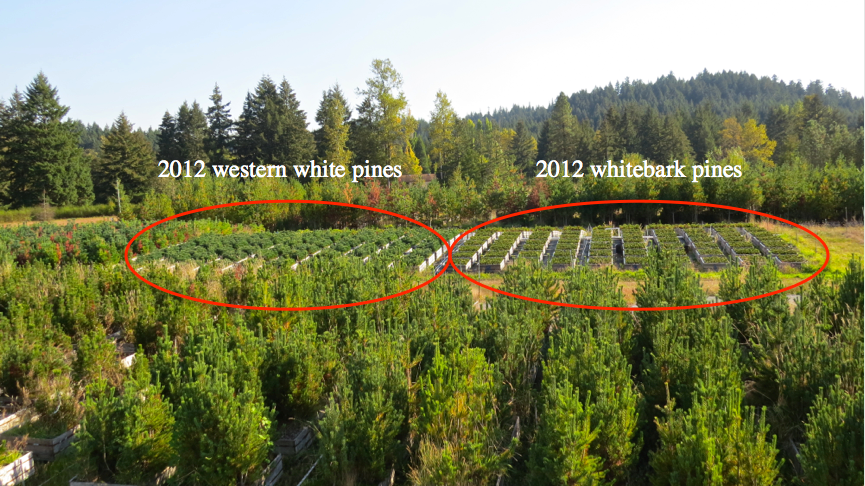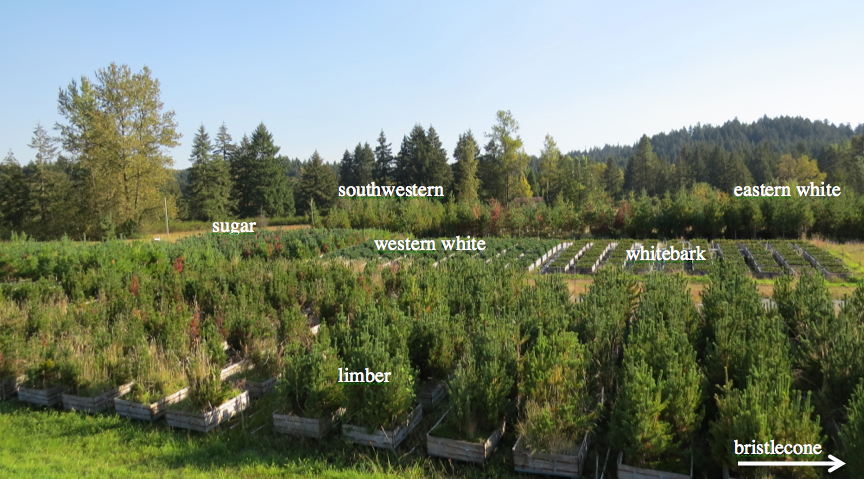
Dorena GRC Collaboration
Block title
 By: Lorinda BullingtonEcologist and Bioinformatics Analyst
By: Lorinda BullingtonEcologist and Bioinformatics Analyst
In early September, MPG teamed up with researchers at the U.S Forest Service Dorena Genetic Resource Center (GRC) in Cottage Grove, OR, to explore the endophytic communities of five needle pines and their relationship to blister rust resistance. At Dorena GRC, Dr. Richard Sniezko and colleagues screen seedling families of multiple five-needle pine species for resistance to white pine blister rust (Cronartium ribicola). They collect seeds from trees that show apparent resistance to blister rust in their native environment. Often the native collections come from areas of moderate to high blister rust. After 1-2 years of growth, seedlings are inoculated with blister rust spores in an indoor inoculation chamber. Later, researchers at Dorena examine seedlings for the frequency of needle spot and stem cankering caused by the rust pathogen.

Image 1. Whitebark pine seedlings in the Dorena GRC blister rust inoculation chamber before inoculation.

To inoculate seedlings, Ribes leaves infected with blister rust are placed spore-side down on a screen above the trees at 100% humidity (image above). After a few hours, the virulent fungal spores fall onto the seedlings below. A single leaf may contain thousands of spores (image below).

We sampled needle tissue from 20 different families of whitebark pine seedlings in the inoculation chamber (image below), directly before inoculation with blister rust. With next generation sequencing technology we can compare the foliar endophyte communities present in resistant vs. susceptible families from multiple regions in the northwest U.S. We will be able to monitor these communities over time to determine how geographic source influences endophyte community assemblage and if specific endophytes inhibit or increase severity of blister rust infection.

We also collected needle tissue from both whitebark pine and western white pine seedlings sown in 2012 and inoculated with blister rust in 2013 (image below). We used needle spot data to determine which trees appear most resistant or susceptible to blister rust at this time. We will compare the endophyte communities of trees at each extreme.

Many western white pines sown in 2010 and inoculated in 2012 already show signs of stem cankering (image below). We used canker data collected last spring to sample needles from trees and families that appear healthy vs. those that show severe systemic infection.

Photo by Richard Sniezko
The facilities at Dorena GRC also provide a unique common garden design to compare endophyte communities of different species of five needle pines (image below). We sampled from 2014 needles of sugar, western white, whitebark, bristlecone, southwestern, limber, and eastern white pine trees to look for selection of foliar endophytes based on tree species. The small spacing between each species group suggests exposure to a similar population of fungal endophytes from the surrounding environment.


About the AuthorLorinda Bullington
Lorinda is currently a Ph. D. student at the University of Montana, studying systems ecology. She also has a master’s degree in molecular ecology, a B.S. degree in microbiology, and a certificate in bioinformatics. Her research investigates how plant-associated microbial communities (plant microbiomes), influence plant growth, defensive chemistry, disease, and nutrient cycling. Lorinda comes from three generations of small-scale Montana loggers and is particularly interested in microbial communities in forest ecosystems. She has published research on fungi associated with native white pines and their influence on tree defensive chemistry and the invasive pathogen Cronartium ribicola, which causes white pine blister rust disease. She also works in collaboration with others at UM studying the influence of bark beetle infestations on fungal decomposer communities, with implications on nutrient turnover and carbon sequestration in forests.
In addition to her own research, Lorinda often assists other researchers in bioinformatics analyses and is currently working on multiple diet-barcoding studies to better understand food web ecology and dynamics across the landscape. For a complete list of Lorinda’s publications, click here.
Lorinda is currently a Ph. D. student at the University of Montana, studying systems ecology. She also has a master’s degree in molecular ecology, a B.S. degree in microbiology, and a certificate in bioinformatics. Her research investigates how plant-associated microbial communities (plant microbiomes), influence plant growth, defensive chemistry, disease, and nutrient cycling. Lorinda comes from three generations of small-scale Montana loggers and is particularly interested in microbial communities in forest ecosystems. She has published research on fungi associated with native white pines and their influence on tree defensive chemistry and the invasive pathogen Cronartium ribicola, which causes white pine blister rust disease. She also works in collaboration with others at UM studying the influence of bark beetle infestations on fungal decomposer communities, with implications on nutrient turnover and carbon sequestration in forests.
In addition to her own research, Lorinda often assists other researchers in bioinformatics analyses and is currently working on multiple diet-barcoding studies to better understand food web ecology and dynamics across the landscape. For a complete list of Lorinda’s publications, click here.



















